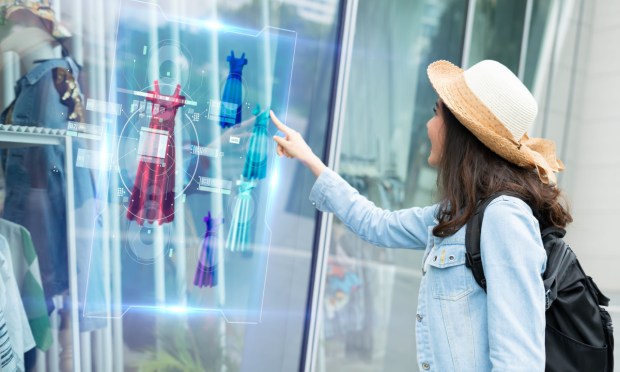
Artificial intelligence (AI) is revolutionizing the fashion industry, injecting creativity and efficiency into design, streamlining production and making shopping more seamless than ever before. One study estimates that AI innovations could add up to an additional $275 billion in fashion profits over the next three to five years.
Naiz Fit, for one, is harnessing the power of advanced natural language processing models that allow for intuitive searches based on occasions or specific queries like “I have a party” or “What goes best with my jeans.”
The My Size Inc. company has introduced a feature that allows customers to try on clothes virtually using their own photos, sidestepping the need for 3D modeling of garments, per a Thursday (Feb. 22) press release. The method uses existing product images for a straightforward experience. Brands can now let shoppers see how different items look together in their pictures, enhancing online shopping.
Other companies are using AI to help customers find the right fit. Amazon Fashion recently introduced a feature for brands on Amazon that helps shoppers find their size more easily. The Fit Insights feature analyses customer feedback about how clothes fit, style, and material. The software combines insights from customer reviews, return data, and size chart analyses to spot inaccuracies in sizing charts.
AI can reduce fashion industry waste by preventing returns and unwanted inventory from clothes that don’t fit. Hakio recently raised money for its software that uses AI-driven demand forecasts in the fashion industry to optimize inventory management, reducing waste and improving overall efficiency. To provide demand forecasts, the company uses machine learning algorithms to analyze 150 data variables, including customer behavior and macroeconomic trends.
The data collected by retailers can be a powerful tool. For example, AI can be used to analyze customer preferences, provide personalized recommendations and help users discover fashion items tailored to their individual styles, Ana Friedlander, NA director of industry solution and strategy, fashion and retail at Infor, a cloud company with many fashion customers, said in an interview.
“Using purchase history, market trends, and algorithms coupled with data analysis, companies can offer tailored recommendations to consumers,” she said.
Manufacturers also use artificial intelligence to identify and forecast potential issues in the manufacturing processes, helping to minimize inefficiencies, Friedlander said. AI-driven systems are placed in production facilities to predict the possibility of machine failure, allowing maintenance to be scheduled ahead of time.
“They use AI-based analytics to help predict demand, optimize production schedules, and the ability to manage inventory in real-time that can mitigate supply chain risks,” she added.
AI can also help get fashion items off the drawing board. Designers start with mood boards, then move to fashion sketches, followed by more detailed technical sketches and then to “tech packs” (instructions for making the item), which lead to making a few sample pieces, Dev Nag, CEO of QueryPal, noted in an interview. Designers check these samples, often making changes to the tech packs, repeating this process several times until everything is suitable for full production.
“AI can now help designers at almost any point in this process, even turning mood boards directly into fashion and technical sketches,” he said.
AI has simplified fashion design to such an extent that the victors of a recent competition were individuals without prior industry experience. Online retailers transformed the top three collections from a design contest held during fashion week into actual garments and put them up for sale. The winners crafted their collections with the help of AI image generators like Midjourney and Stable Diffusion.